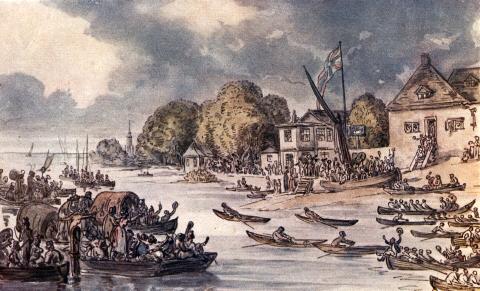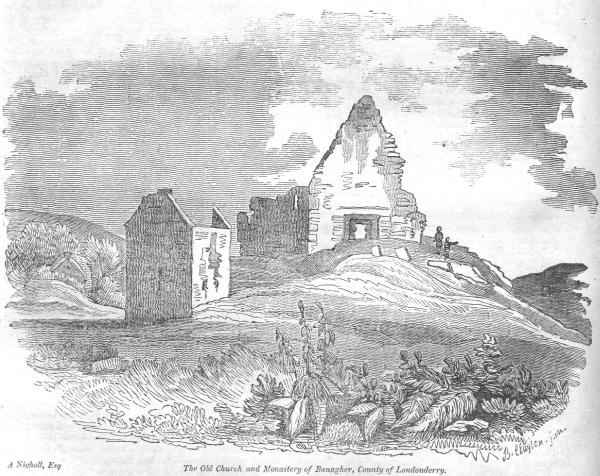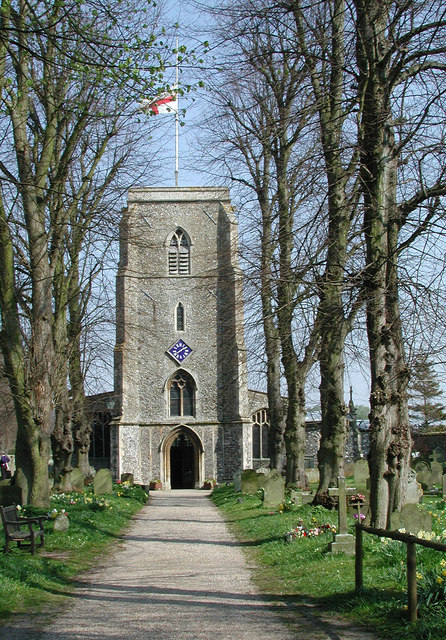|
Worshipful Company Of Fishmongers
The Worshipful Company of Fishmongers (or Fishmongers' Company) is one of the 110 Livery Companies of the City of London, being an incorporated guild of sellers of fish and seafood in the City. The Company ranks fourth in the order of precedence of City Livery Companies, thereby making it one of the Great Twelve City Livery Companies. History The Company records an unbroken existence for 750 years – although undoubtedly it existed earlier – having received its first Royal Charter in 1272. A predecessor guild was fined as ''adulterine'' in 1154. It took the name Stock Fishmongers' Company under another Royal Charter granted in 1508. Then, in 1537, it merged with the Salt Fishmongers' Company to form the Company with its present name. The most famous City fishmonger is Sir William Walworth, who, as Lord Mayor of London in 1381, helped bring the Peasants' Revolt to an end by stabbing the rebel Wat Tyler to death at Smithfield in the presence of King Richard II. In ... [...More Info...] [...Related Items...] OR: [Wikipedia] [Google] [Baidu] |
Smithfield, London
Smithfield, properly known as West Smithfield, is a district located in Central London, part of Farringdon Without, the most westerly ward of the City of London, England. Smithfield is home to a number of City institutions, such as St Bartholomew's Hospital and livery halls, including those of the Butchers' and Haberdashers' Companies. The area is best known for the Smithfield meat market, which dates from the 10th century, has been in continuous operation since medieval times, and is now London's only remaining wholesale market. Smithfield's principal street is called ''West Smithfield'', and the area also contains London's oldest surviving church, St Bartholomew-the-Great, founded in AD 1123. The area has borne witness to many executions of heretics and political rebels over the centuries, as well as Scottish knight Sir William Wallace, and Wat Tyler, leader of the Peasants' Revolt, among many other religious reformers and dissenters. Smithfield Market, a Grade ... [...More Info...] [...Related Items...] OR: [Wikipedia] [Google] [Baidu] |
Doggett's Coat And Badge
Doggett's Coat and Badge is the prize and name for the oldest rowing race in the world. Up to six apprentice watermen of the River Thames in England compete for this prestigious honour, which has been held every year since 1715. The 4 mile 5 furlongs (7.44 km) race is rowed on the River Thames upstream from London Bridge to Cadogan Pier, Chelsea, passing under a total of eleven bridges. Originally, it was raced every 1 August against the outgoing (falling or ebb) tide, in the boats used by watermen to ferry passengers across the Thames. Today it is raced at a time amenable to spectators, in September, that coincides with the incoming (rising or flood) tide, in contemporary single sculling boats. The winner's prize is a traditional watermen's red coat with a silver badge added, displaying the horse of the House of Hanover and the word "Liberty", in honour of the accession of George I to the throne. In addition, each competitor who completes the course receives a miniature ... [...More Info...] [...Related Items...] OR: [Wikipedia] [Google] [Baidu] |
Thomas Doggett
Thomas Doggett (or Dogget) (20 September 1721) was an Irish actor. The birth date of 1640 seems unlikely. A more probable date of 1670 is given in the Encyclopædia Britannica. Biography Doggett was born in Dublin, and made his first stage appearance in London in 1691 as Nincompoop in Thomas D'Urfey's ''Love for Money''. In this part, and as Solon in the same author's ''The Marriage-Hater Matched'', he became popular. He followed Betterton to Lincoln's Inn Fields, creating the part of Ben, specially written for him, in William Congreve's ''Love for Love'', with which the theatre opened (1695); and the following year played Young Hobb in his own play, ''The Country Wake''. He was associated with Colley Cibber and others in the management of the Theatre Royal, Haymarket, and Drury Lane, and he continued to play comedy parts at the former until his retirement in 1713. Doggett is highly spoken of by his contemporaries, both as an actor and as a man, and is frequently referred t ... [...More Info...] [...Related Items...] OR: [Wikipedia] [Google] [Baidu] |
Plantation Of Ulster
The Plantation of Ulster ( gle, Plandáil Uladh; Ulster-Scots: ''Plantin o Ulstèr'') was the organised colonisation ('' plantation'') of Ulstera province of Irelandby people from Great Britain during the reign of King James I. Most of the settlers (or ''planters'') came from southern Scotland and northern England; their culture differed from that of the native Irish. Small privately funded plantations by wealthy landowners began in 1606, while the official plantation began in 1609. Most of the colonised land had been confiscated from the native Gaelic chiefs, several of whom had fled Ireland for mainland Europe in 1607 following the Nine Years' War against English rule. The official plantation comprised an estimated half a million acres (2,000 km2) of arable land in counties Armagh, Cavan, Fermanagh, Tyrone, Donegal, and Londonderry. Land in counties Antrim, Down, and Monaghan was privately colonised with the king's support. Among those involved in plannin ... [...More Info...] [...Related Items...] OR: [Wikipedia] [Google] [Baidu] |
Ulster
Ulster (; ga, Ulaidh or ''Cúige Uladh'' ; sco, label= Ulster Scots, Ulstèr or ''Ulster'') is one of the four traditional Irish provinces. It is made up of nine counties: six of these constitute Northern Ireland (a part of the United Kingdom); the remaining three are in the Republic of Ireland. It is the second-largest (after Munster) and second-most populous (after Leinster) of Ireland's four traditional provinces, with Belfast being its biggest city. Unlike the other provinces, Ulster has a high percentage of Protestants, making up almost half of its population. English is the main language and Ulster English the main dialect. A minority also speak Irish, and there are Gaeltachtaí (Irish-speaking regions) in southern County Londonderry, the Gaeltacht Quarter, Belfast, and in County Donegal; collectively, these three regions are home to a quarter of the total Gaeltacht population of Ireland. Ulster-Scots is also spoken. Lough Neagh, in the east, is the largest lake ... [...More Info...] [...Related Items...] OR: [Wikipedia] [Google] [Baidu] |
Northern Ireland
Northern Ireland ( ga, Tuaisceart Éireann ; sco, label=Ulster Scots dialect, Ulster-Scots, Norlin Airlann) is a part of the United Kingdom, situated in the north-east of the island of Ireland, that is #Descriptions, variously described as a country, province or region. Northern Ireland shares Republic of Ireland–United Kingdom border, an open border to the south and west with the Republic of Ireland. In 2021 United Kingdom census, 2021, its population was 1,903,100, making up about 27% of Ireland#Demographics, Ireland's population and about 3% of the Demography of the United Kingdom#Population, UK's population. The Northern Ireland Assembly (colloquially referred to as Stormont Estate, Stormont after its location), established by the Northern Ireland Act 1998, holds responsibility for a range of Devolution, devolved policy matters, while other areas are reserved for the Government of the United Kingdom, UK Government. Northern Ireland cooperates with the Republic of Irelan ... [...More Info...] [...Related Items...] OR: [Wikipedia] [Google] [Baidu] |
Banagher, County Londonderry
Banagher (pronounced , ) is a parish in County Londonderry, Northern Ireland. The parish is made up of the medieval parish of Banagher and parts of the ancient parish of Boveva and the townland of Tireighter and Park, once in the parish of Cumber.The Parish at banagherparish.com (accessed 3 March 2008) Banagher has many ancient monuments, including churches, holy wells, standing stones and chambered graves. Geography Banagher lies in the western foothills of the Sperrin Mountains, between the rivers Roe and Faughan. The landscape is mostly rugged, with |
Ballykelly, County Londonderry
Ballykelly () is a village and townland in County Londonderry, Northern Ireland. It lies west of Limavady on the main Derry to Limavady A2 road and is east of Derry. It is designated as a Large Village and in 2011 the population of Ballykelly was 2,107. It lies within Causeway Coast and Glens district. Features Ballykelly contains some of the most interesting buildings erected in Ulster by the Plantation companies, being largely developed by the London Company of Fishmongers through the 18th and 19th centuries. It features Tamlaghtfinlagan Parish Church, built by Earl Frederick Hervey, 18th-century Bishop of Derry, amongst many traditional buildings. The Presbyterian Church, Drummond Hotel and North West Independent Hospital, were all built by the London Company of Fishmongers. The village enjoys views across Lough Foyle to Inishowen in County Donegal and is bordered by Ballykelly Forest which was the first State Forest in Northern Ireland. Politics The village lies with ... [...More Info...] [...Related Items...] OR: [Wikipedia] [Google] [Baidu] |
Holt, Norfolk
Holt is a market town, civil parish and electoral ward in the English county of Norfolk. The town is north of the city of Norwich, west of Cromer and east of King's Lynn. The town has a population of 3,550, rising and including the ward to 3,810 at the 2011 census. Holt is within the area covered by North Norfolk District Council. Holt has a heritage railway station; it is the south-western terminus of the preserved North Norfolk Railway, known as the ''Poppy Line''. History Origins The most likely derivation of the name Holt is from an Anglo-Saxon word for woodland,Brooks, Peter, ''Holt, Georgian Market Town'', (Cromer: Poppyland Publishing, second edition 2001, ) and Holt is located on wooded high ground of the Cromer-Holt ridge at the crossing point of two ancient by-ways and as such was a natural point for a settlement to grow. The town has a mention in the great survey of 1086 known as the Domesday Book. In the survey it is described as a market town and a port with ... [...More Info...] [...Related Items...] OR: [Wikipedia] [Google] [Baidu] |
Gresham's School
Gresham's School is a public school (English independent day and boarding school) in Holt, Norfolk, England, one of the top thirty International Baccalaureate schools in England. The school was founded in 1555 by Sir John Gresham as a free grammar school for forty boys, following King Henry VIII's dissolution of Beeston Priory. The founder left the school's endowments in the hands of the Worshipful Company of Fishmongers of the City of London, who are still the school's trustees. In the 1890s, an increase in the rental income of property in the City of London led to a major expansion of the school, which built many new buildings on land it owned on the eastern edge of Holt, including several new boarding houses as well as new teaching buildings, library and chapel. Gresham's began to admit girls in 1971 and is now fully co-educational. As well as its senior school, it operates a preparatory and a nursery and pre-prep school, the latter now in the Old School House, the ... [...More Info...] [...Related Items...] OR: [Wikipedia] [Google] [Baidu] |
Court Of Law
A court is any person or institution, often as a government institution, with the authority to adjudicate legal disputes between parties and carry out the administration of justice in civil, criminal, and administrative matters in accordance with the rule of law. In both common law and civil law legal systems, courts are the central means for dispute resolution, and it is generally understood that all people have an ability to bring their claims before a court. Similarly, the rights of those accused of a crime include the right to present a defense before a court. The system of courts that interprets and applies the law is collectively known as the judiciary. The place where a court sits is known as a venue. The room where court proceedings occur is known as a courtroom, and the building as a courthouse; court facilities range from simple and very small facilities in rural communities to large complex facilities in urban communities. The practical authority given to ... [...More Info...] [...Related Items...] OR: [Wikipedia] [Google] [Baidu] |







